How to Identify Velvet Shanks
Common Names:
Velvet Shank, Enoki
Botanical Name:
Flammulina Velutipes
Meaning of Botanical Name:
Flammulina meaning flaming top, and Velutipes meaning velvety leg
Scientific Classification:
Kingdom: Fungi,
Division: Basidiomycota,
Class: Agaricomycetes,
Order: Agaricales,
Family: Physalacriaceae
Genus: Flammulina
Known Hazards:
None known
Could be confused with:
Sulphur tufts that don’t have the velvety brown to the stem and can’t withstand the winter cold as well, they also have a sulphurous colour to them.
Food Plant of:
This mushroom rarely has maggots.
Range and Distribution:
Common throughout Britain and Ireland, Europe, Aisa, North Africa and North America
Habitat:
Occurs on logs and stumps of hardwood trees and diseased trees
Physical Characteristics of the Velvet Shank Mushroom:
Cap
They grow in clusters on stumps, The caps are flame-like, orange in the centre becoming lighter and yellowy towards the edge
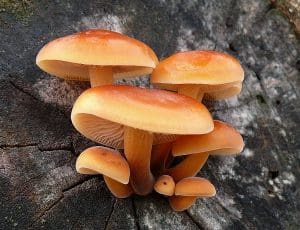
Gills
The gills are creamy coloured, adnate and well-spaced.

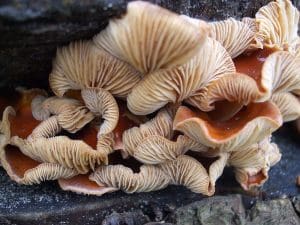
Stem
The stem starts of orangy yellow when young becoming dark brown and velvety with age.
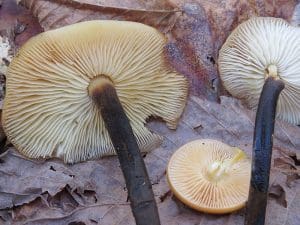
Smell
They have a lovely sweet fruity metallic smell.
Spores
This mushroom has a white spore print.
Edible Use:
The Velvet Shank Mushroom Fantastic edible mushroom, the stems can be a little chewy but go well in stews etc.
Herbal:
These mushrooms have good very anti-cancer properties.
The last word goes to……..
This gorgeous mushroom is a wild variety of the cultivated Enoki mushroom which is often used within Asian Cuisine.



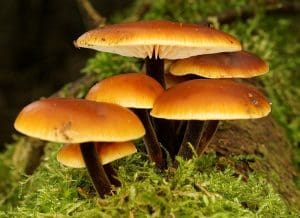
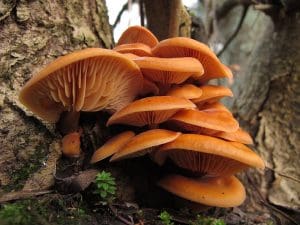



Leave a Reply
You must be logged in to post a comment.